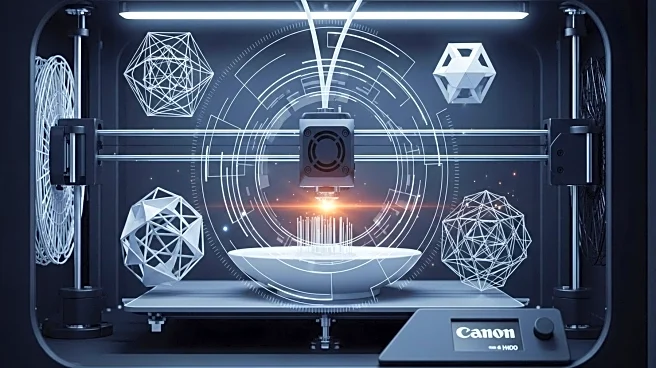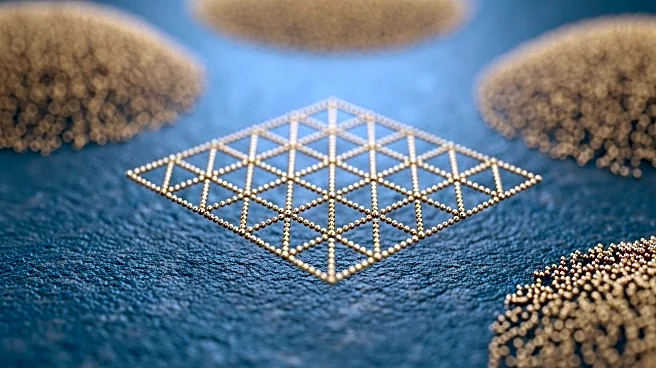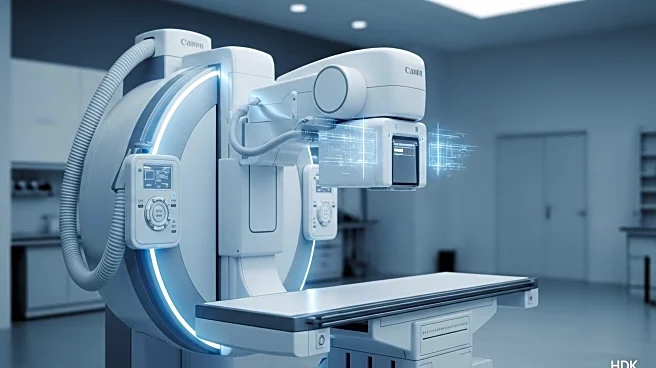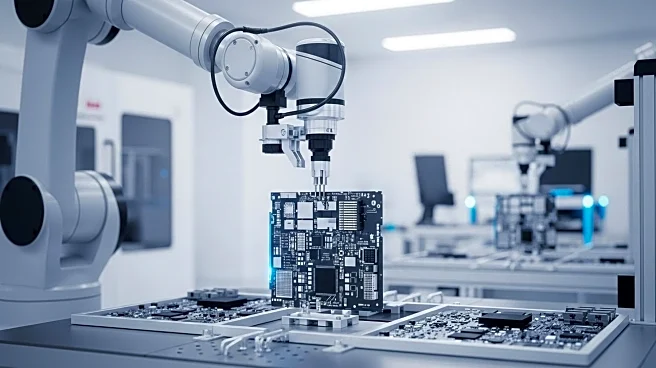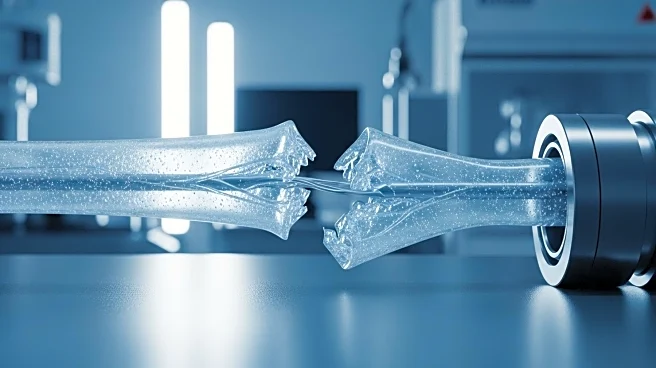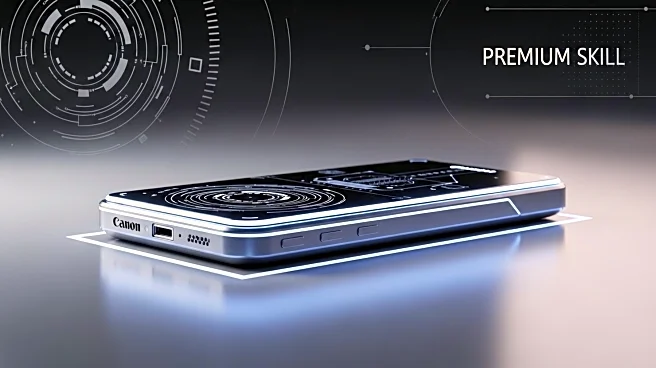What is the story about?
What's Happening?
A recent publication in Nature highlights a significant advancement in 3D printing technology, developed by Riccardo Levato and colleagues. The new method, termed GRACE (generative, adaptive, context-aware 3D printing), allows for the creation of complex structures that can adapt to their environment during the printing process. This technology utilizes light-based imaging, computer vision, and modeling to map the 3D environment within the printer vial, enabling the printing of intricate parts on the centimeter scale within seconds. The GRACE device features a volumetric printer and a light-sheet microscopy path, which uses multiple lasers to provide imaging across various fluorescence channels. This approach allows for the automatic alignment and printing of a second material onto a pre-existing object, enhancing the adaptability and precision of the printed structures.
Why It's Important?
The development of GRACE technology represents a significant leap forward in the field of additive manufacturing, particularly in biomedical applications. By enabling the rapid and precise printing of complex structures, this technology could revolutionize the production of biomedical materials, polymers, and tissues. The ability to print entire structures in one process using cell-compatible light is particularly beneficial for medical applications, where precision and biocompatibility are crucial. This advancement could lead to more efficient production processes, reducing costs and increasing accessibility to advanced medical devices and materials. Industries involved in manufacturing, healthcare, and research stand to benefit significantly from this technology, potentially leading to new innovations and improved patient outcomes.
What's Next?
The introduction of GRACE technology is likely to spur further research and development in adaptive 3D printing, with potential applications extending beyond biomedical fields. As the technology becomes more refined, it could be integrated into various manufacturing processes, offering enhanced customization and efficiency. Stakeholders in the healthcare and manufacturing sectors may begin exploring partnerships and investments to leverage this technology for commercial use. Additionally, regulatory bodies might need to establish new guidelines to ensure the safe and effective use of this technology in medical applications. The continued evolution of GRACE technology could lead to broader adoption and new breakthroughs in 3D printing capabilities.
Beyond the Headlines
The ethical implications of adaptive 3D printing technology are worth considering, particularly in the context of biomedical applications. As the technology enables more precise and customizable production of medical devices and materials, questions may arise regarding accessibility and equity in healthcare. Ensuring that advancements in 3D printing do not exacerbate existing disparities in healthcare access will be crucial. Furthermore, the environmental impact of increased 3D printing activity should be monitored, as the technology becomes more widespread. Balancing innovation with sustainability and ethical considerations will be key to the responsible development and deployment of GRACE technology.
AI Generated Content
Do you find this article useful?
